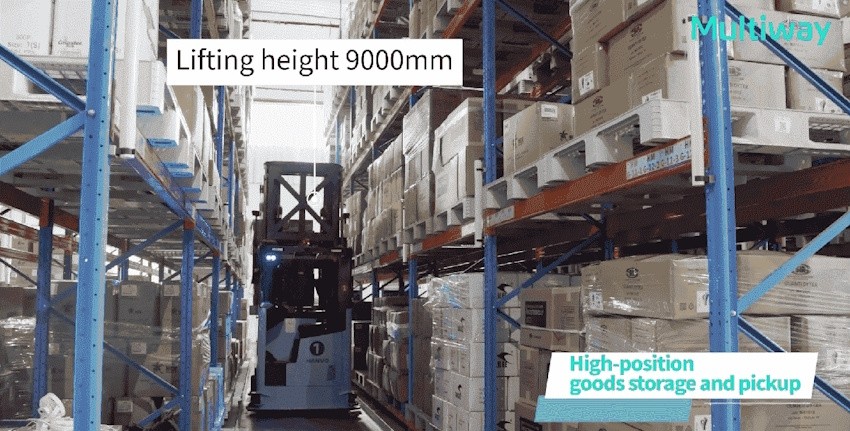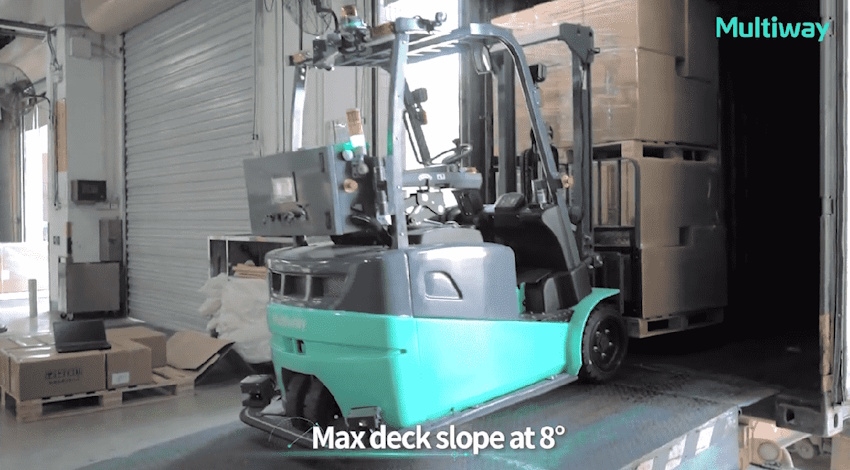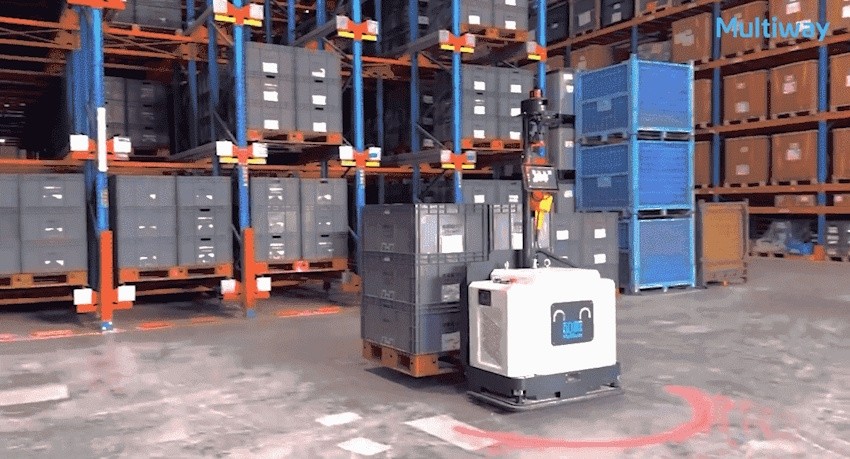[Forklift Action Report]Multiway Robotics: A Smarter Alternative to Manual Forklifts
Date:2025-09-19
AGV Forklifts for Narrow Aisles, High Stacking, and 24/7 Logistics

Intralogistic today is at a crossroads. From global supply chain complexity to rising customer expectations, both manufacturing plants and warehouses are being asked to achieve more with less. Floor space is limited, material flows are more complex, and the demand for round-the-clock operations shows no sign of slowing. Yet many facilities still rely on manual forklifts — machines designed for a different era of production and intralogistics. The question is becoming harder to ignore: are manual forklifts truly enough for today's challenges in manufacturing and warehousing logistics?
One of the biggest pressures comes from the need to maximize storage density. Companies are building taller racks and narrowing aisles to squeeze every bit of efficiency from their existing space. For human operators, however, this environment is unforgiving. Visibility drops, maneuvering becomes harder, and the risk of collisions increases. What should boost efficiency can easily become a bottleneck. The challenge does not stop at floor space. Stacking goods above six or seven meters has become routine, but manual drivers face fatigue, blind spots, and the physical limits of precision at height. A small error can result in damaged goods, safety incidents, or delays, all of which come at a cost. Add to this the reality of labor shortages, and the strain becomes even clearer. Warehouses striving for 24/7 operations often struggle to find enough skilled drivers, and even the best teams cannot sustain peak concentration around the clock.
This is where autonomous forklifts present a compelling alternative. Multiway Robotics develops intelligent vehicles built to thrive under exactly these conditions. Laser navigation and vision systems enable safe operation in aisles as narrow as two meters. High-stack models such as the K16 lift up to nine meters with repeatable precision. Automated charging and fleet scheduling make true 24/7 operations achievable, while safety circuits and 3D LiDAR protect people, products, and infrastructure. Equally important, these systems integrate with warehouse management and ERP platforms, allowing businesses to adopt them without disrupting existing workflows.

Multiway's product line also reflects the variety of challenges that warehouses face. The MW-Q20 Tail Loading and Unloading Forklift is purpose-built to automate the “last 100 meters” of in-plant logistics. Designed for truck-tail operations, it combines laser SLAM positioning with adaptive vision technologies, adapting to different truck sizes and handling block, stringer, and nine-leg pallets. It also supports stacking inside trailers and dual-pallet handling. To ensure stability, the MW-Q20 is equipped with real-time inclination detection that supports dock ramps up to 8°. It also offers precise side-to-side positioning for tight spaces and automatic fork spacing that adjusts to different pallet sizes without manual intervention.

The X20S Pallet-Handling Forklift is another flagship solution, designed for damage-free compatibility with block pallets. It recognizes pallet position with accuracy and ensures stable handling, even in complex logistics environments. Meanwhile, the MW-SE15 Counterbalanced Forklift extends automation to broader scenarios such as racking, stacking, and distribution. With strong anti-interference design and built-in perception and obstacle avoidance systems, it offers stability and reliability across diverse industrial sites.


Together, these models demonstrate Multiway's philosophy: building forklifts not just to replace manual labor, but to address specific pain points in modern logistics.
Global leaders in manufacturing and industrial logistics are already turning to Multiway Robotics to address these challenges. Enterprises such as Airbus, Sumitomo, Samsung, LG, Hanwha, Emerson, China Aerospace, China FAW, COMAC, State Grid, Haier, and Pingmei Group have deployed Multiway autonomous forklifts to streamline both shop-floor and warehouse logistics. The results are tangible: customers report significant gains in storage density through narrower aisles and higher stacking, reduced labor costs as operators transition into supervisory roles, and true 24/7 uptime without compromising safety. Far from being just a cost-saving measure, automation has unlocked new capacity and resilience that manual equipment simply cannot achieve.
News